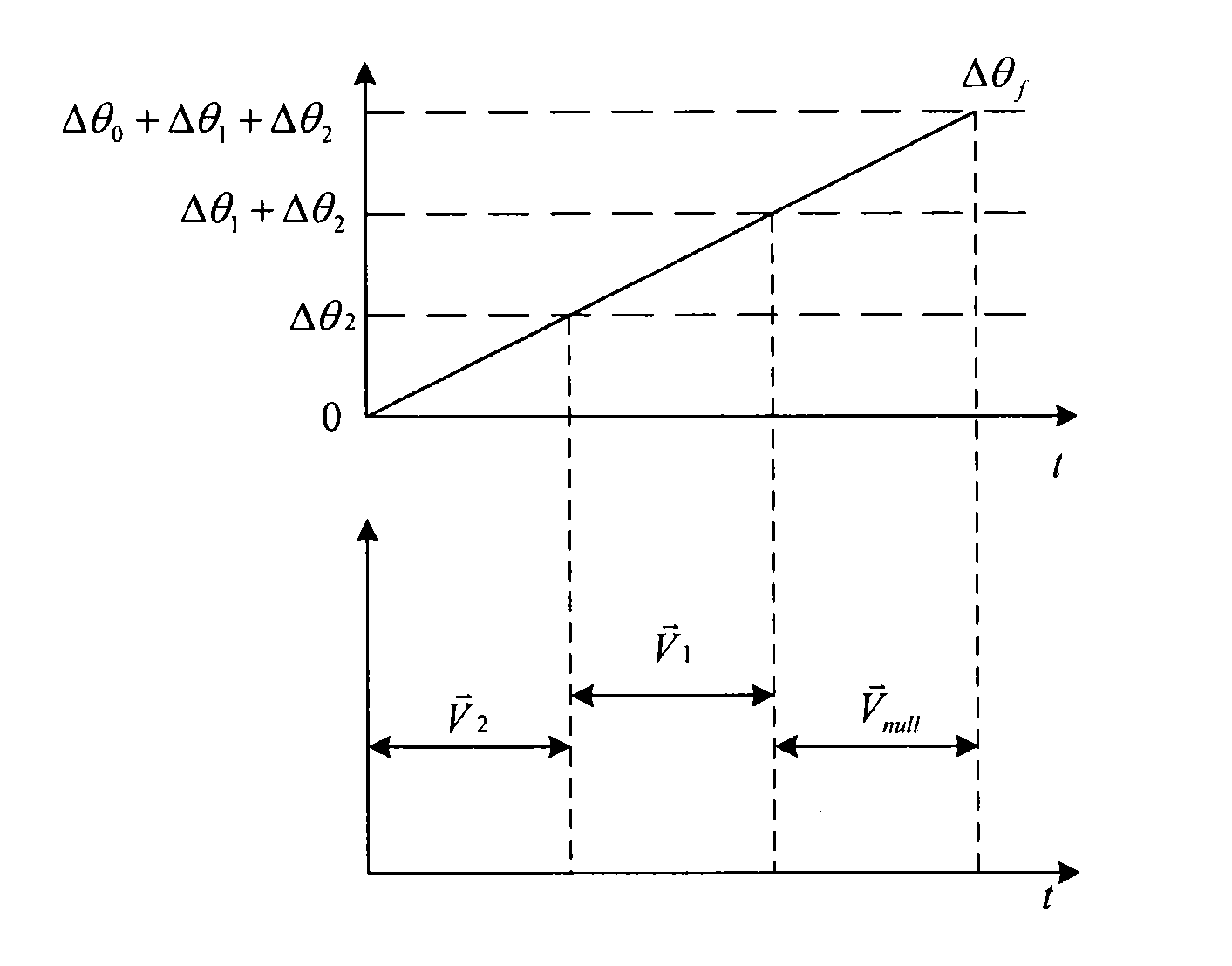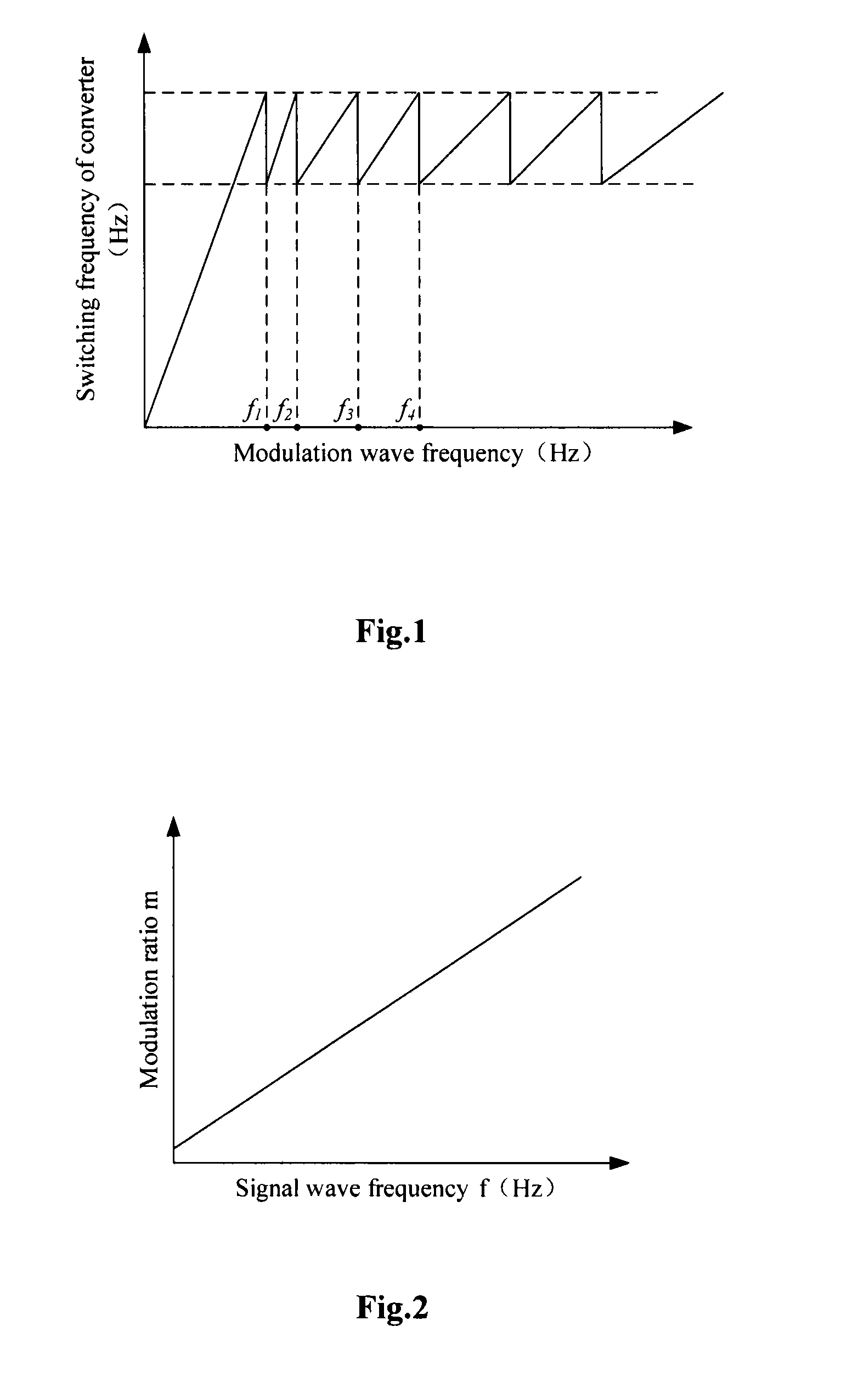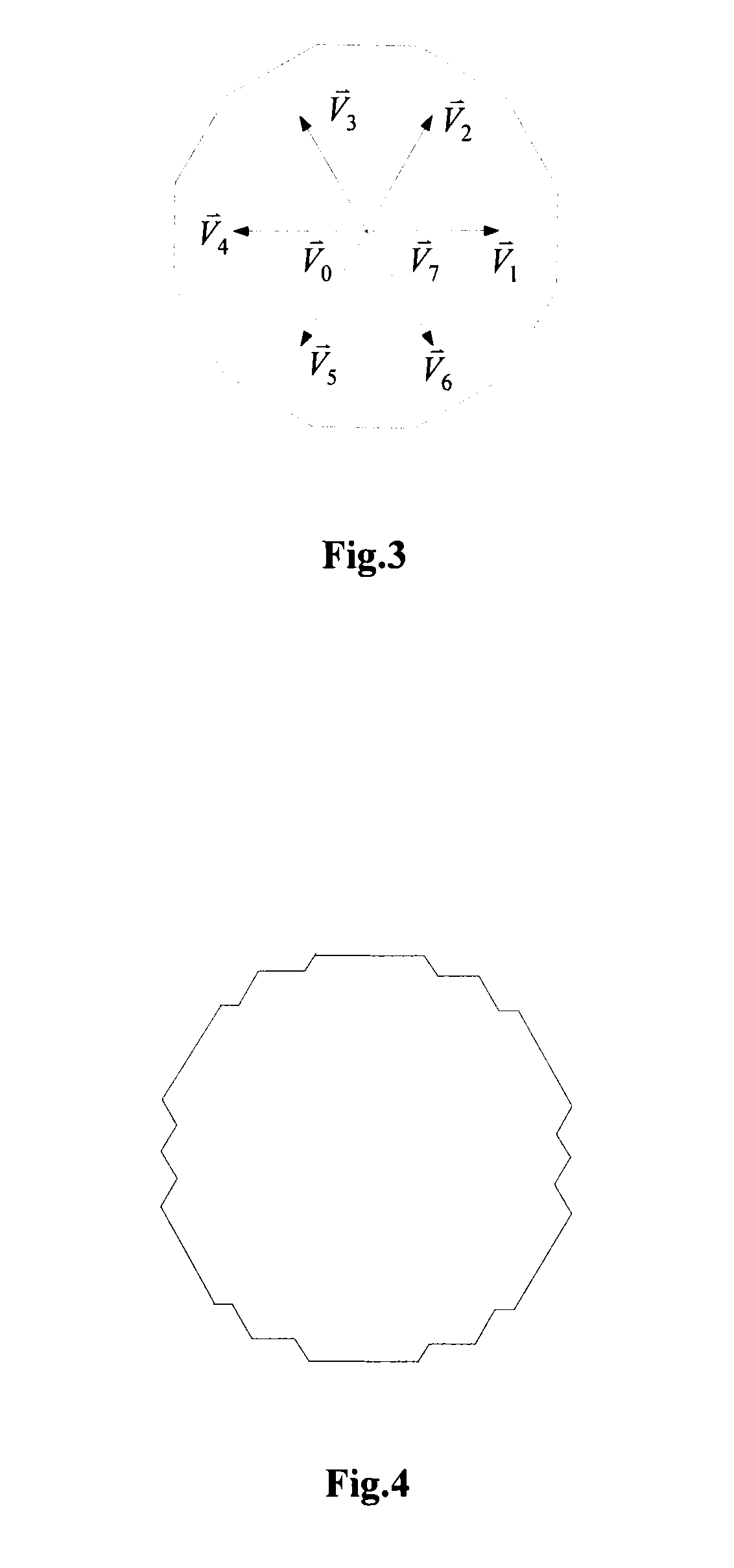Space vector based synchronous modulating method and system
a synchronous modulation and space vector technology, applied in the field of vector modulation, can solve the problems of degrading performance, frustrating the purpose of synchronous modulation, complex calculation process, etc., and achieve the effect of reducing the number of calculation steps and making an angle of synchronous modulation more accura
- Summary
- Abstract
- Description
- Claims
- Application Information
AI Technical Summary
Benefits of technology
Problems solved by technology
Method used
Image
Examples
first embodiment
[0075]An embodiment of the method according to the invention will be detailed below with reference to FIG. 7 illustrating a flow chart of a space vector based synchronous modulation method according to the invention.
[0076]S701: The frequency f of a reference voltage vector is sampled, and a carrier wave ratio N is retrieved from a relationship table of frequencies and carrier wave ratios by using the frequency f.
[0077]S702: An angle Δθ that the reference voltage vector has undergone is derived from Δθ=2π / N, and a modulation angle θm of the reference voltage vector is derived from θm=(Nth−1)×Δθ, where Nth represents the Nth sampling, i.e., the Nth sampling of the reference voltage vector, and the number of times that it is sampled is N / 6 per sector. The angle Δθ that the reference voltage vector has undergone is an angle to be output from synchronous modulation.
[0078]S703: A modulation ratio m is retrieved from a modulation ratio vs. frequency graph.
[0079]S704: Output angles of three...
second embodiment
[0091]An embodiment of the method according to the invention will be detailed below with reference to FIG. 11. Reference is made to FIG. 11 illustrating a flow chart of a space vector based synchronous modulation method according to the invention. The method includes the following steps:
[0092]S1101: The frequency f of a reference voltage vector is sampled, and a carrier wave ratio N is retrieved from a relationship table of frequencies and carrier wave ratios by using the frequency f. The sampled frequency f of the reference voltage vector can be acquired in real time or at a predetermined interval of time.
[0093]S1102: An angle Δθ that the reference voltage vector has undergone is derived in Δθ=2π / N, and a modulation angle θm of the reference voltage vector is derived in θm=(N−1)×Δθ, where Nth represents the Nth sampling, i.e., the Nth sampling of the reference voltage vector, and the number of times that it is sampled is N / 6 per sector. The angle Δθ that the reference voltage vecto...
PUM
 Login to View More
Login to View More Abstract
Description
Claims
Application Information
 Login to View More
Login to View More - R&D
- Intellectual Property
- Life Sciences
- Materials
- Tech Scout
- Unparalleled Data Quality
- Higher Quality Content
- 60% Fewer Hallucinations
Browse by: Latest US Patents, China's latest patents, Technical Efficacy Thesaurus, Application Domain, Technology Topic, Popular Technical Reports.
© 2025 PatSnap. All rights reserved.Legal|Privacy policy|Modern Slavery Act Transparency Statement|Sitemap|About US| Contact US: help@patsnap.com



